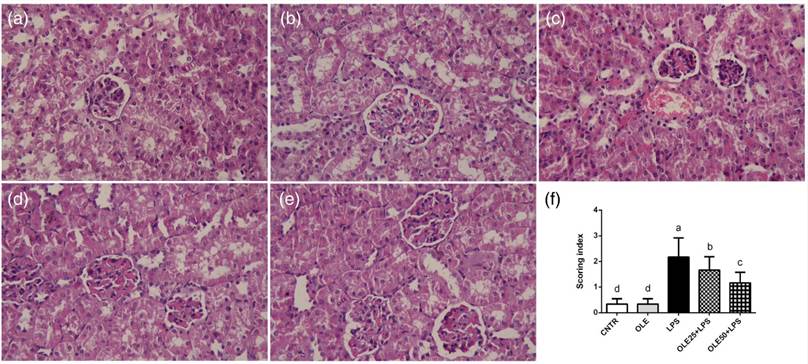- You are here: Home
- Disease Models
- Inflammation & Autoimmune Disease Models
- Sepsis Model
- Lipopolysaccharide (LPS)-Induced Sepsis Model
Disease Models
- Oncology Models
-
Inflammation & Autoimmune Disease Models
- Rheumatoid Arthritis Models
- Glomerulonephritis Models
- Multiple Sclerosis (MS) Models
- Ocular Inflammation Models
- Sjögren's Syndrome Model
- LPS-induced Acute Lung Injury Model
- Peritonitis Models
- Passive Cutaneous Anaphylaxis Model
- Delayed-Type Hypersensitivity (DTH) Models
- Inflammatory Bowel Disease Models
- Systemic Lupus Erythematosus Animal Models
- Asthma Model
- Sepsis Model
- Psoriasis Model
- Atopic Dermatitis (AD) Model
- Scleroderma Model
- Gouty Arthritis Model
- Carrageenan-Induced Air Pouch Synovitis Model
- Carrageenan-Induced Paw Edema Model
- Experimental Autoimmune Myasthenia Gravis (EAMG) Model
-
Cardiovascular Disease Models
- Surgical Models
- Animal Models of Hypertension
- Venous Thrombosis Model
- Atherosclerosis model
- Cardiac Arrhythmia Model
- Hyperlipoidemia Model
- Doxorubicin-induced Heart Failure Model
- Isoproterenol-induced Heart Failure Model
- Arterial Thrombosis Model
- Pulmonary Arterial Hypertension (PAH) Models
- Heart Failure with Preserved Ejection Fraction (HFpEF) Model
-
Neurological Disease Models
- Alzheimer's Disease Modeling and Assays
- Seizure Models
- Parkinson's Disease Models
- Ischemic Stroke Models
- Acute Spinal Cord Injury (ASCI) Model
- Traumatic Brain Injury (TBI) Model
- Hypoxic-Ischemic Encephalopathy (HIE) Model
- Tourette Syndrome (TS) Model
- Amyotrophic Lateral Sclerosis (ALS) Model
- Huntington's Disease (HD) Model
- Intracerebral hemorrhage (ICH) Models
- Pain Models
- Metabolic Disease Models
- Liver Disease Models
- Rare Disease Models
- Respiratory Disease Models
- Digestive Disease Models
-
Urology Disease Models
- Cisplatin-induced Nephrotoxicity Model
- Unilateral Ureteral Obstruction Model
- 5/6 Nephrectomy Model
- Renal Ischemia-Reperfusion Injury (RIRI) Model
- Diabetic Nephropathy (DN) Models
- Passive Heymann Nephritis (PHN) Model
- Adenine-Induced Chronic Kidney Disease (CKD) Model
- Kidney Stone Model
- Doxorubicin-Induced Nephropathy Model
- Orthopedic Disease Models
- Ocular Disease Models
- Skin Disease Models
- Infectious Disease Models
Lipopolysaccharide (LPS)-Induced Sepsis Model
Creative Bioarray is a reputable and highly regarded Contract Research Organization (CRO) that offers a sophisticated lipopolysaccharide (LPS)-induced sepsis model. This model is designed to assist our clients in meticulously screening potential anti-sepsis drug candidates with precision and accuracy.
Sepsis, a critical health concern responsible for 19.7% of global deaths, is a syndrome characterized by a deregulated host response to infection, resulting in physiological abnormalities and potentially life-threatening organ dysfunction. To gain a deeper understanding of its pathophysiology, our scientists have established an LPS-induced sepsis model. LPS, a key component in this model, is recognized by Toll-like receptor 4 (TLR-4) present in immune cells in animals. This recognition process is facilitated by two accessory proteins, CD14 and MD-2. Upon stimulation, TLR-4 interacts with the adaptor molecule MyD88 (myeloid differentiation primary-response protein 88), initiating a signaling cascade. This MyD88-dependent pathway ultimately activates nuclear factor-κβ (NF-κβ), a transcription factor that regulates the expression of genes encoding pro-inflammatory mediators. However, overstimulation of these receptors can lead to uncontrolled inflammation, ultimately resulting in sepsis.
 Fig. 1 Mechanisms of action of LPS as a sepsis inducer
Fig. 1 Mechanisms of action of LPS as a sepsis inducer
Our Lipopolysaccharide (LPS)-Induced Sepsis Model
- Available Animal
Rat
Mouse - Modeling Method
Animals receive LPS by intraperitoneal injection. - Endpoints
- Body weight
- Survival rate
- Clinical observation
- Cytokine analysis: IL-1β, TNF-α, IL-6, etc.
- Histology analysis: H&E staining
- Serum analysis: creatinine kinase, BUN, ALT, AST, etc.
- qPCR or Western Blot
- Other customized endpoints: available upon request.
Example Data
 Fig. 2 Serum levels of TNF-α, IL-1β, and IL-6 in the examined groups
Fig. 2 Serum levels of TNF-α, IL-1β, and IL-6 in the examined groups
 Fig. 3 Histological changes in the liver tissue in the examined groups. (a) Control group, (b) OLE-treated group, (c) lipopolysaccharide (LPS)-treated group, (d) OLE25 + LPS-treated group, (e) OLE50 + LPS-treated group, and (f) liver scoring index.
Fig. 3 Histological changes in the liver tissue in the examined groups. (a) Control group, (b) OLE-treated group, (c) lipopolysaccharide (LPS)-treated group, (d) OLE25 + LPS-treated group, (e) OLE50 + LPS-treated group, and (f) liver scoring index.
 Fig. 4 Histological changes in the kidney tissue in the examined groups. (a) control group, (b) OLE-treated group, (c) lipopolysaccharide (LPS)-treated group, (d) OLE25 + LPS treated group, (e) OLE50 + LPS treated group, and (f) Kidney scoring index
Fig. 4 Histological changes in the kidney tissue in the examined groups. (a) control group, (b) OLE-treated group, (c) lipopolysaccharide (LPS)-treated group, (d) OLE25 + LPS treated group, (e) OLE50 + LPS treated group, and (f) Kidney scoring index
In addition, we also provide other sepsis models that maybe you are interested in:
- Cecum Ligation and Puncture (CLP)-Induced Sepsis Model
- Colon Ascendens Stent Peritonitis (CASP)-Induced Sepsis Model
Quotation and Ordering
Creative Bioarray is willing to share our cutting-edge technology and extensive expertise in rodent disease models to facilitate our clients' research and project development. If you are interested in our services, please feel free to contact us at any time or submit an inquiry to us directly.
References
- Solov'eva, Tamara., et al. Marine Compounds with Therapeutic Potential in Gram-Negative Sepsis. Marine drugs. 2013, 11, 2216-2229.
- Alsharif, K.F, et al. Oleuropein protects against lipopolysaccharide‐induced sepsis and alleviates inflammatory responses in mice. IUBMB life, 2020, 72(10): 2121-2132.
For research use only. Not for any other purpose.

